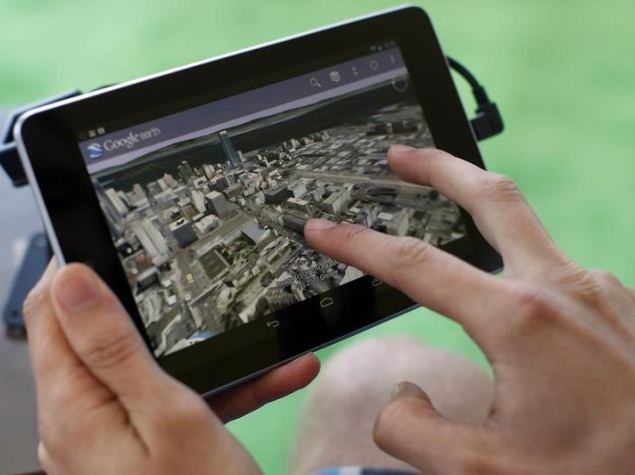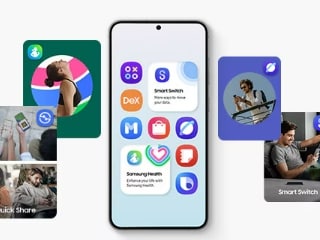- Home
- Internet
- Internet Features
- Is It a Building? Is It a Rock? Using Technology to Chart the 'Unmapped World'
Is It a Building? Is It a Rock? Using Technology to Chart the 'Unmapped World'

The Missing Maps Project gets volunteers to mark satellite photographs of undermapped places, building detailed maps which can be used by aid agencies wanting to know how many houses are in a village or trails are in a forest.
Grant Swanpoel, a software designer for a bank, is spending his evening in a London university classroom, peering at a grainy aerial picture of an arid patch of South Sudan, trying to work out if a cluster of dark pixels is a building or a rock.
"I like maps and wanted to do something for the greater good," said Swanpoel, a South African attending his first "mapathon".
He consults with his neighbours, and decides what he is looking at is a building. He clicks on it and marks it as such. Missing Maps Project volunteers are allocated a quadrant of land to study, marking everything that looks like a road or dwelling.
A second pair of eyes then has a look and validates the changes. Where possible, field workers eventually follow up on the ground, checking that a grainy line marked as a road doesn't have a tree or wall running across it.
First the geeks, then the world
A few dozen volunteers gather in London for a mapathon each month, spending three hours zooming, clicking and tagging before heading to the pub. Others, both remote mappers and those in the field, contribute from around the world.
The pooled contributions are added to "Open Street Maps", described as a "Wikipedia for maps" by its founder, which provides an open source - free to tinker with - map of the world.
The Missing Maps Project was set up when it became clear Open Street Maps were comprehensive in a "place where a geek lived," but not in remote parts of the world, said Pete Masters of Medecins Sans Frontieres (MSF), who leads the project.
It is a collaboration between MSF, the Red Cross and the Humanitarian OpenStreetMap Team (HOT). Masters said 3.5 million people not on existing maps have now been mapped remotely by the project, with 1.5 million of these verified by field workers.
The beginners' group in London is mapping South Sudan's Unity State, while a more experienced group upstairs is scrutinising the dense forests of South Kivu.
Local knowledge
As well as preemptively mapping hard to reach places, volunteers also mobilise in response to crises. When a devastating earthquake hit Nepal in April, teams around the world got to work, pulling all-nighters with their laptops.
Kathmandu airport was chockablock, so identifying where helicopters could land was a priority, said Masters.
Nepalis on the ground were recruited and paid to walk the streets to corroborate the data. "If you have the local knowledge, which Google doesn't have, the data is a lot better," Masters told the Thomson Reuters Foundation.
The maps can be used by aid workers delivering vaccination programmes, helping them estimate the number of people in a remote settlement by counting the number and size of dwellings.
Anna Gibson, who creates maps for a London borough council, is looking for buildings and trails beneath South Kivu's blurry canopy. "You're creating something which could be used by somebody," she said.
As well as having a detailed map, aid workers also need to be able to locate themselves on it. What3words, a London-based company, aims to give every patch of earth an easy to remember three word address rather than a complex set of coordinates.
Help.incredibly.lost
If you are an aid worker, making sure you install a water pump in the right spot and deliver a vaccine to the right village is crucial, but this can be difficult in places where address systems are erratic and inconsistent.
What3words estimates 4 billion people lack a consistent address, and these are not just in the developing world - Ireland and Dubai launched code based address systems for the first time this year.
Co-ordinates (like 51°30'15.4"N 0°01'13.1"W) give a precise spot, but humans find it hard to communicate and remember so many numbers, decimal points and compass directions, Giles Rhys Jones, a company spokesman, told the Thomson Reuters Foundation.
To solve this, what3words have divided the planet into 57 trillion three by three metre squares, and have given each a unique three word name.
For instance, the face of the Sphinx at Giza, Egypt is at foiled.policy.blueberry, while a spot of ocean a few hundred kilometres west of Hawaii is given the tag help.incredibly.lost.
Words that sound the same but are spelled differently, like sale and sail, are excluded, as are rude words. Densely populated areas get more memorable words, while more obscure ones get assigned to Antarctica or a remote splash of ocean.
The system is available in nine languages. A postman in Rocinha, a Rio de Janeiro favela, uses what3words to deliver mail, finding the three word tags easier than long co-ordinates or irregular addressing systems, said Rhys Jones.
"If you look (at Rocinha) on Google Maps there's about three streets, but if you flip to satellite view you can see there's about 10,000," he said.
© Thomson Reuters 2015
Get your daily dose of tech news, reviews, and insights, in under 80 characters on Gadgets 360 Turbo. Connect with fellow tech lovers on our Forum. Follow us on X, Facebook, WhatsApp, Threads and Google News for instant updates. Catch all the action on our YouTube channel.
Related Stories
- Samsung Galaxy Unpacked 2025
- ChatGPT
- Redmi Note 14 Pro+
- iPhone 16
- Apple Vision Pro
- Oneplus 12
- OnePlus Nord CE 3 Lite 5G
- iPhone 13
- Xiaomi 14 Pro
- Oppo Find N3
- Tecno Spark Go (2023)
- Realme V30
- Best Phones Under 25000
- Samsung Galaxy S24 Series
- Cryptocurrency
- iQoo 12
- Samsung Galaxy S24 Ultra
- Giottus
- Samsung Galaxy Z Flip 5
- Apple 'Scary Fast'
- Housefull 5
- GoPro Hero 12 Black Review
- Invincible Season 2
- JioGlass
- HD Ready TV
- Laptop Under 50000
- Smartwatch Under 10000
- Latest Mobile Phones
- Compare Phones
- Jolla Phone
- Realme P4x 5G
- OnePlus Ace 6T
- Nubia Flip 3
- Nubia Fold
- OPPO A6x 5G
- Samsung Galaxy Z TriFold
- Poco F8 Ultra
- Asus ProArt P16
- MacBook Pro 14-inch (M5, 2025)
- OnePlus Pad Go 2
- Poco Pad M1
- Just Corseca Skywatch Pro
- Honor Watch X5
- Acerpure Nitro Z Series 100-inch QLED TV
- Samsung 43 Inch LED Ultra HD (4K) Smart TV (UA43UE81AFULXL)
- Asus ROG Ally
- Nintendo Switch Lite
- Haier 1.6 Ton 5 Star Inverter Split AC (HSU19G-MZAID5BN-INV)
- Haier 1.6 Ton 5 Star Inverter Split AC (HSU19G-MZAIM5BN-INV)
















